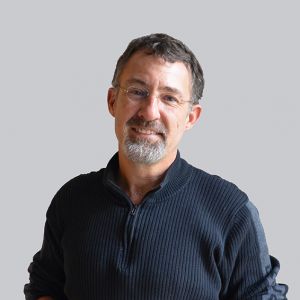NOTE: This content is primarily intended for AEC professionals doing business in California in Healthcare.
For the past couple of months, I have served the State of California on the State Health Facilities Code Advisory Committee and the State Plumbing, Electrical, Mechanical, and Energy Advisory Committee. (That probably sounds a lot grander than it really is). Basically, we were a multi-disciplinary team of volunteers who spent several days reviewing proposed state building code changes and providing feedback. I have been privileged through the years to work on codes and standards in so many capacities–it is always a different and interesting process.
In this particular case, we reviewed, among others, the following (which will become the new California law in due course):
- OSHPD is adopting the requirement for a Patient-Safety Risk Assessment.
California continues to be unable to muster the political will to adopt the FGI Guidelines. So, every cycle, staff have to cobble together pieces and parts of the Guidelines and try to weave them into the current state regulations. (I fantasize working with state legislators and others to get our beautiful state to adopt the Guidelines; I never seem to get there.) The Patient Safety Risk Assessment is an extremely important part of a structured process to manage risks for the benefit of the patients, providers, and progeny (I couldn’t think of another ‘p’ word for visitors).
- OSHPD has made a substantial expansion of the regulations regarding mental health treatment.
I think this is interesting, and it makes me think about adding one regulation and taking away two. This mental health population has been tragically under-served in our country, such that mental health issues have become a serious factor in declining public health. These new regulations help inform the industry what is needed for effective treatment in a wide range of clinical settings. One of my co-committee volunteers (with a hospital chain) thanked OSHPD for helping to develop these regulations, as his organization had needed that kind of guidance.
- OSHPD has created other requirements for technology spaces in Healthcare.
Again, I’ve assisted many owners, post-occupancy, tackling insufficient space for their burgeoning equipment appetite. The OSHPD regulations are not excessive. They will ensure that these control cabinets stay out of the soiled utility room. (I can still remember, as a young engineer, designing a nurse call control cabinet into a soiled utility room, because I didn’t know I needed to plan the space earlier.)
- OSHPD has provided the option for an outpatient observation unit.
This should help some payors to save some money and keep the people out of the hospital.
- OSHPD has adopted language covering energy storage systems.
This is critically important, as we are starting to design significant energy storage systems for a number of progressive clients as parts of microgrids. This clarity is needed.
- OSHPD has adopted the national standards in adopting new humidity provisions. California and OSHPD were actually the inspirations for these changes. A number of years ago, I sat on the Hospital Building Safety Board with a number of really good people. We had a committee that looked into the issue of humidity – it was well-known that few humidifiers in California hospitals were ever turned on, and we concluded that there was, in fact, no evidence that humidity levels made any difference (times were simpler then). I drafted a letter to ASHE, ASHRAE, FGI, and others, asking them to consider this issue. As a result of California’s committee work, the national organizations changed their standards, and now, California is finally able to adopt these national standards.
There were many more, but the volume makes it only interesting, probably, to a code-junkie who fantasizes about the FGI, so I will end the list there.
But, I do want to add one more observation.
I recently came across what looks to be an interesting book– American Amnesia. Its thesis is that America’s economy, and all successful modern economies, are blends of the innovation and dynamically efficient resource allocation, together with governments’ investments in common goods such as infrastructure, education, and public health. The book remembers the idealism of people who want to return to a democracy of decency, where people with disagreements can focus on the power of shared solutions rather than bludgeoning each other in search of selfish success. I remember this book because just this morning, I was in a meeting with some people at the ASHE PDC conference, and we were bemoaning the current President’s interest in eliminating the ENERGY STAR Program. “The only governmental program that helps people make or save money.” Wow.
What I have observed, in my work with OSHPD over the years, is a narrative remarkably closer to the one in American Amnesia, distant from the divisive government-bashing dystopian vision of our current leaders. In OSHPD, in its volunteer citizen committees, I have spent years watching people trying to listen to each other, to hear each other, to understand each other. I have watched people from all perspectives work towards common solutions. I have watched people who give generously of their own time (in full disclosure, the state does pay a stipend of $100 a day – before taxes – so for those who claim the benefit, not entirely volunteer) to help the state agency do its job better. I think, in truth, we are not so divided after all–in truth, that is the kind of world we want to live in and the one we must work together to create.
Interested in what you see? Subscribe to receive monthly news and information
more tailored to what you need.

